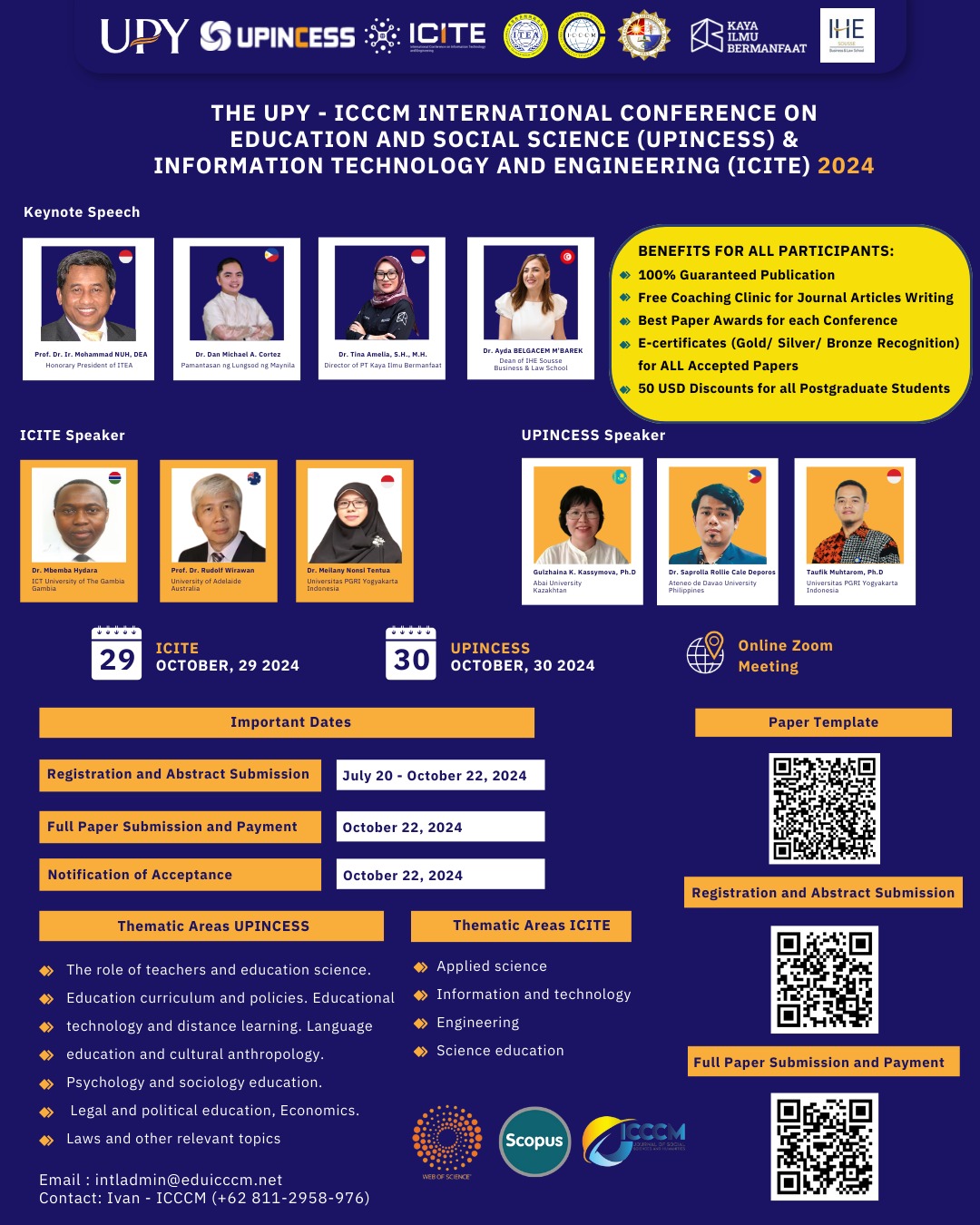Level of Conceptual Understanding Among Secondary Students on Topic of Forces and Motion Using Half-Length Force Concept Inventory (HFCI)
DOI:
https://doi.org/10.53797/icccmjssh.v1i2.2.2022Keywords:
forces and motion, half-length force concept inventory, conceptual understandingAbstract
This study aimed to identify the level of understanding of secondary school students on the topic of forces and motion as a whole as well as based on different genders. A total of 73 students from one of International School was selected as respondent. This survey study used the Half-Length Force Concept Inventory (HFCI) model. Data were analyzed using the IBM Statistical Package for Social Science (SPSS) Statistics version 26. The study found that the level of understanding of secondary school students on forces and motion topic was at low level. The misconception found in the aspect of force motion related to Newtonian concept of force. There was a significant difference in term of level of conceptual level of understanding in forces and motion topic between male and female students (M = 43.88, p =.001) which is less than .05. Results showed that the students having low level of conceptual understanding in forces and motion topic. This also will give some insights to teacher at secondary level towards identifying weakness among students on topic of forces and motion as well as improving method of approach in teaching and learning to students.
Downloads
References
Ahmad Tarmimi Ismail & Shahrul Kadri Ayop. (2016). Tahap Kefahaman dan Salah Konsep Terhadap Konsep Daya Dan Gerakan Dalam Kalangan Pelajar Tingkatan Empat. Jurnal Fizik Malaysia, 37(1), pp. 01090-01101
Alias, S.N. and Ibrahim, F. (2015). The Level of Mastering Forces in Equilibrium Topics by Thinking Skills. International Journal of Multicultural and Multireligious Understanding. 2(5), 18-24. https://doi.org/10.18415/ijmmu.v2i5.27
Creswell, J. W. & Creswell J. D (2009). Research Design: Qualitative, Quantitative and Mixed Methods Approaches. Sage publications
Driver, R., Guesne, E.,& Tiberghien, A. (1985). Children's Ideas In Science. Miltonkeynes, England: Open University Press
Halloun, I. A., & Hestenes, D. (1985). Common sense concepts about motion. American journal of physics, 53(11), 1056-1065.
Han, J., Bao, L., Chen, L., Cai, T., Pi, Y., Zhou, S., Tu, Y., & Koenig, K. (2015). Dividing the Force Concept Inventory into two equivalent half-length tests. Physical Review Special Topics - Physics Education Research, 11(1). https://doi.org/10.1103/physrevstper.11.010112
Hestenes, D., Wells, M., & Swackhamer, G. (1992). Force concept inventory. The physics teacher, 30(3), 141-158
Holton, J. (2001). Introducing Children’s Ideas To Teachers. London: Heineman
Ivie, R., & Tesfaye, C. L. (2012). Women in physics. Phys. Today, 65(2), 47
McCullough, L. & Meltzer, D. (2001). Differences in male/female response patterns on alternative-format versions of FCI items. Proceedings of the 2001 Physics Education Research Conference (pp. 103-106)
McDermott, L. C., & Redish, E. F. (1999). Resource letter: PER-1: Physics education research. American journal of physics, 67(9), 755-767
Erfan, M., & Ratu, T. (2018). Pencapaian HOTS (Higher Order Thinking Skills) mahasiswa Program Studi Pendidikan Fisika FKIP Universitas Samawa. Jurnal Pendidikan Fisika Dan Teknologi, 4(2), 208–212. https://doi.org/10.29303/jpft.v4i2.831
Nabilah Faiqah Azman, Marlina Alia, Lilia Ellany Mohtar. (2013). The Level of Misconceptions on Force and Motion Among Physics Pre-service Teachers in UPSI (Doctoral dissertation, Universiti Teknologi Malaysia
Nieminen, P., Savinainen, A., & Viiri, J. (2012). Relations between representational consistency, conceptual understanding of the force concept, and scientific reasoning. Physical Review Special Topics - Physics Education Research, 8(1). https://doi.org/10.1103/physrevstper.8.010123
Nurul Fatihah Che Othman, (2013) Student Understanding Of Electricity And Magnetism Concepts. Universiti Teknologi MARA
Perkins-Gough, D. (2006). Accelerating the learning of low achievers. Educational Leadership, 63(5), 88–89. https://eric.ed.gov/?id=EJ745552
Reid, N. & Skryabina, E.A. (2003). Gender And Physics. International Journal of Science Education, 25(4), 509–536.
Sulaiman, S. & Ngoo, L. F. (2008). Corak Gaya Kognitif dan Tahap Penguasaan Konsep Daya Newtonian di kalangan Pelajar Tingkatan Enam Rendah: Satu Kajian Rintis. In Seminar Kebangsaan Pendidikan Sains dan Matematik
Thomas, K. (1990). Gender and Subject In Higher Education. Buckingham: Open University Press
Downloads
Published
How to Cite
Issue
Section
License
Copyright (c) 2022 Nurul Aufa Badruldin, Siti Nursaila Alias

This work is licensed under a Creative Commons Attribution-NonCommercial-ShareAlike 4.0 International License.




